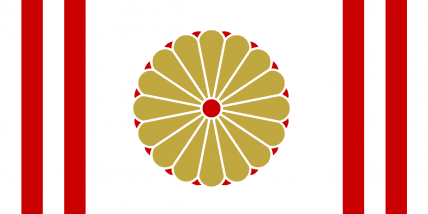1
Organization of the Imperial Goverment.

The Imperial Diet
The current administration of Japan is more focused on an elected board of politicians known as the Imperial Diet, with governing power mostly residing with the Prime Minister of Japan, the third highest administrative authority in the nation. They are responsible for most of the administrative policies of the Empire, such as the decision to deploy troops overseas, the lowering of the draft age, and the relocation of refugees and resources following Operation Lucifer.
The Imperial Diet suffered a major blow during the 12/5 Incident, where most of them were killed in the initial stages of the uprising by IJA/MDF Captain Sagiri Naoya and his forces. The Shogunate established a provisional government to restore order after the incident.
Ministry of Defence
A branch of the government, the Ministry of Defence oversees all projects to safeguard the Empire of Japan, including operations of the IJMDF. Under them are also various projects and plans to strengthen the fighting capabilities of the Empire of Japan as a whole; The Weapons Technology Development Authority, responsible for the development of the EML-99X and the XFJ Plan, is one such branch of the Ministry.
Imperial Shogunate
The Shogunate supports and places the Emperor of Japan as its highest authority, and has its own armed force, the Imperial Japanese Royal Guard, to ensure the security of the Shogunate and the Emperor. The current Shogunate draws its candidates for the position of Shogun from the Five Regent Houses of Koubuin (煌武院), Ikaruga (斑鳩), Saionji (斉御司), Kujou (九條), and Takatsukasa (崇宰), noble families who were descended from the ruling Shogun's clan prior to the 1900s. While the most recent Shogun is Military governor/General Mitsurugi Meiya.
The Regent Houses are thus amongst the highest-ranking nobles of Imperial Japan, superseded only by the Emperor of Japan. Their rank color is blue, with the appointed Shogun donning purple. Each of the Regent Houses also have their own independent security units, which can usually be identified by the red garb they wear.
Under the Regent Houses are the fudai, hereditary vassals with many generations of direct service to the Shogun, and by extension, the Regent Houses, under their name. Many of them serve in important positions; Takamura Masatada, for example, and the Takamura family in general, were prominent fudai responsible for several weapon development projects. The fudai wear yellow as their rank color.
One rank under the fudai are the samurai families, who wear white as their rank color. Most serve under the fudai as their direct subordinates.
The last rank of those serving in the Royal Guard and Shogunate are those not related to the samurai families, and thus do not have any actual status or nobility within the Shogunate. They wear grey as their rank color.











